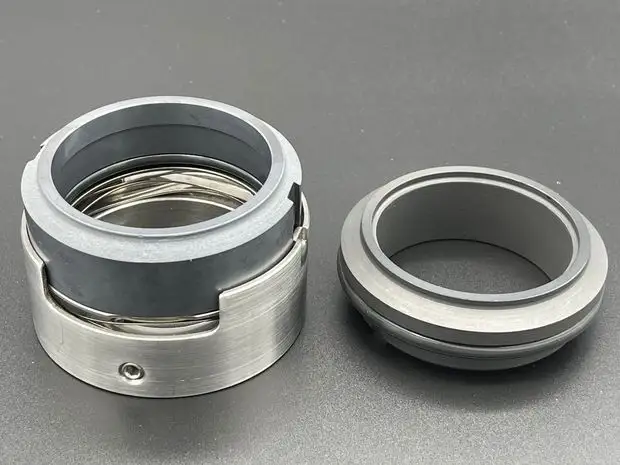How to assemble centrifugal pump seals
The assembly of centrifugal pump seals is a meticulous and critical process, which directly affects the performance and sealing effect of the pump. The following is a detailed assembly step of centrifugal pump seals for reference:
1. Preparation
Count the parts: Make sure that the number of parts of all seals is correct, there is no missing, and there is no stain, wear and scratches on the surface.
Cleaning: Thoroughly clean the moving ring, static ring, sleeve and other parts to ensure that there are no impurities. Check whether there are scratches, cracks and other defects on the surface of the moving and static rings, which will affect the sealing effect.
Apply lubricant: Before assembly, apply soapy water or other suitable lubricants to all seals to avoid damage to the rubber rings during assembly. At the same time, apply grease between the sealing surfaces of the moving and static rings to prevent wear before the water pump is started.
2. Assembly steps
Install the static ring:
Insert the static ring seal from the tail of the static ring.
Align the anti-rotation pin groove on the back of the static ring with the anti-rotation pin, install the static ring into the gland, and ensure that the static ring is not skewed. The height of the anti-rotation pin should be appropriate, and a gap of 1 to 2 mm should be left at the root of the anti-rotation pin groove of the static ring.
Install the dynamic ring:
Apply engine oil to the inner diameter of the dynamic ring and the position of the O-ring, and then install it on the sleeve.
Ensure that the dynamic ring is installed in place and can be reset flexibly.
Adjust the compression:
Adjust the compression of the mechanical seal according to the specifications and requirements of the pump. Generally, the compression should be equal to 60% of the distance from the spring extension to the dead spring.
At the same time, adjust the distance of the mechanical seal according to the axial movement to ensure that the mechanical seal can remain stable when the pump is running.
Fix the dynamic ring seat:
Fix the dynamic ring seat on the shaft for the press seal dynamic ring to ensure that the dynamic ring can work stably.
Install other components:
Install the sleeve O-ring, machine seal cover, bearing retainer and other components in sequence.
During the installation process, pay attention to the tightness and installation order of each component to avoid omission or wrong installation.
Install the bearing and sleeve:
Install the bearing on the shaft, and install the sleeve and lock nut to ensure that the bearing can operate stably.
Install the end cover and cooling water system:
Install the end cover on the seal body and fix it with screws.
If the pump needs a cooling water system, it is also necessary to install a mechanical seal flushing water system to ensure that the pump can be fully cooled during operation.
3. Inspection and debugging
Cranking test:
After assembly, perform a cranking test to check whether the pump runs easily and without jamming.
Pay attention to whether there is leakage at the seal, and if there is leakage, it should be handled in time.
Adjustment and tightening:
Adjust the compression and distance of the mechanical seal according to the test conditions to ensure the best sealing effect.
Tighten the bolts and nuts of each component to ensure that the pump will not loosen during operation.





